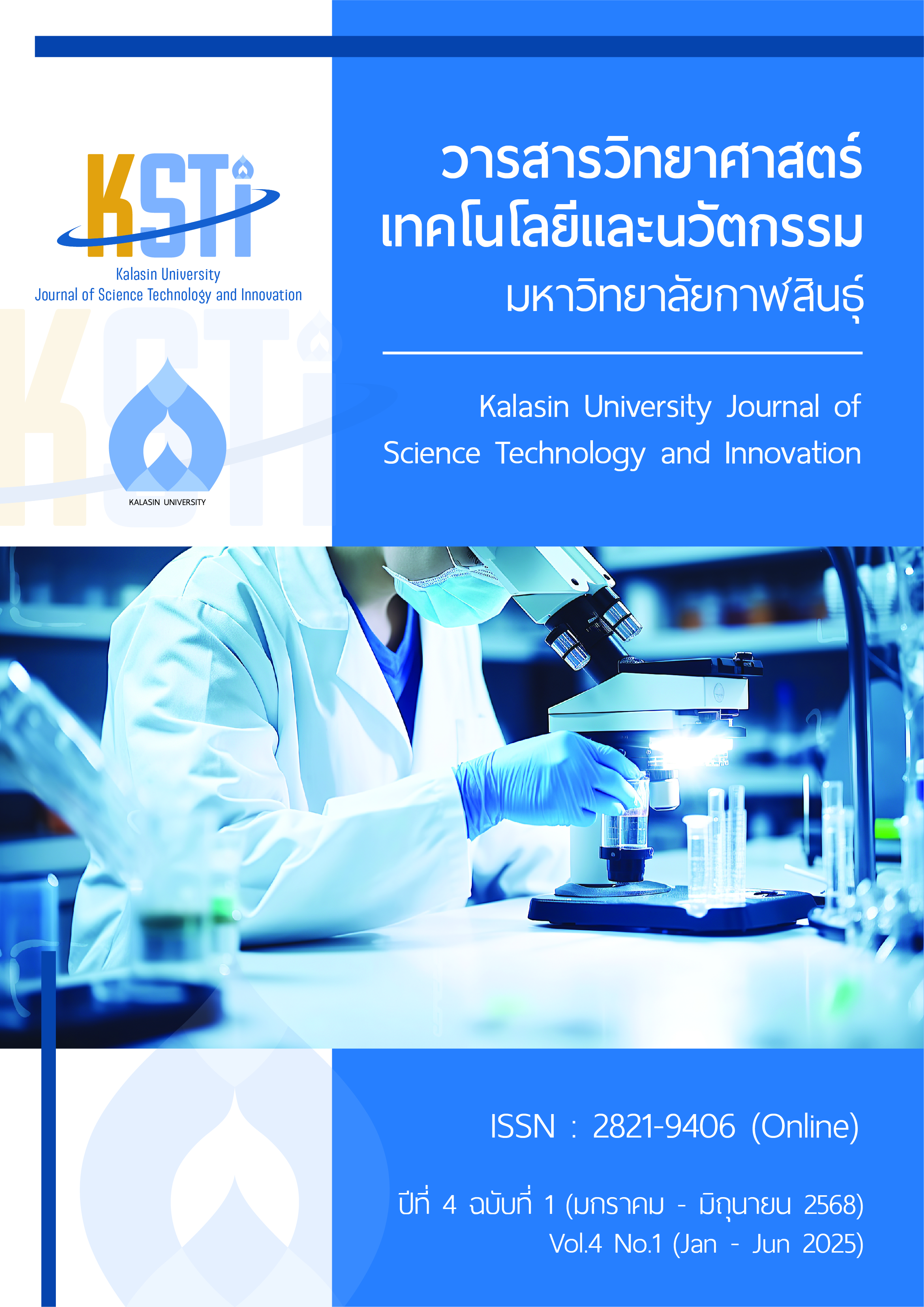The Effect of a Basic Life Support (BLS) Training Program on Knowledge and Skills of Higher School Students in Trang Province
Main Article Content
Abstract
This quasi-experimental research aimed to: 1) compare the mean scores of knowledge and skills in basic life support (BLS) before and after the experiment between the experimental and control groups, and 2) compare the mean scores of knowledge and skills between the experimental and control groups. The samples in both experimental and control groups were 49 higher secondary school students received from using the G*Power software for the numbers and using simple random sampling via lottery technique for the sampling method. The research instruments included a BLS training program that incorporated computer-based learning materials and a hands-on practice using a mannequin. The program was conducted twice over a two-week period. The instrument for the experimental control was a BLS skills practice log, while the data collection instruments consisted of a knowledge test and a skills assessment form with reliability coefficients of 0.75 and 0.78, respectively. The obtained data were analyzed using the descriptive statistics and the inferential ones including both independent and dependent t-tests. The research findings indicated that the mean of knowledge and skill scores after the experiment in both the experimental and control groups were significantly higher than those before the experiment at the level of 0.01 (p < 0.01). Furthermore, the mean scores for knowledge and skills in BLS after the experiment were significantly different between the experimental and control groups at the level of 0.01 (p < 0.01). These findings suggested that the developed BLS training program was effective in enhancing students' knowledge and skills. Implementing this program in schools or training curricula can help equip young individuals with essential life-saving skills for emergency situations.
Downloads
Article Details

This work is licensed under a Creative Commons Attribution-NonCommercial-NoDerivatives 4.0 International License.
The owner (Research and Development Institute, Kalasin University), the authors agree that any copies of the article or any part thereof distributed or posted by them in print or electronic format as permitted will include the notice of copyright as stipulated in the journal and a full citation to the final published version of the contribution in the journal as published by Research and Development Institute, Kalasin University.
References
สำนักโรคไม่ติดต่อ. รายงานการเฝ้าระวังการบาดเจ็บ (Injury Surveillance) พ.ศ. 2561. กรมควบคุมโรค กระทรวงสาธารณสุข; 2561.
สำนักโรคไม่ติดต่อ. รายงานสถิติการป่วยจากโรคหัวใจขาดเลือดในประเทศไทย พ.ศ. 2559-2561. กรมควบคุมโรค กระทรวงสาธารณสุข; 2563.
สถาบันการแพทย์ฉุกเฉินแห่งชาติ. สรุปผลการประเมินผลแผนหลักการแพทย์ฉุกเฉินแห่งชาติ ฉบับที่ 1- ฉบับที่ 3.1 ระหว่างปี 2553-2565. [อินเทอร์เน็ต]. 2563. เข้าถึงได้จาก: https://www.niems.go.th/1/UploadAttachFile/2022/EBook/414483_20220110132528.pdf
พรทิพย์ จอกกระจาย. การช่วยชีวิตผู้ใหญ่ที่มีภาวะหัวใจหยุดเต้นนอกโรงพยาบาล. วารสารมหาวิทยาลัยคริสเตียน 2563;26(2):115-6.
สำนักงานเขตพื้นที่การศึกษามัธยมศึกษาตรัง กระบี่. หลักสูตรการศึกษาขั้นพื้นฐาน. [อินเทอร์เน็ต]. 2566. เข้าถึงได้จาก: https://www.sesatrgkbi.go.th/site/
สิริโฉม พิเชษฐบุญเกียรติ. การฝึกทักษะยุวอาสาช่วยฟื้นคืนชีพด้วยกระบวนการเรียนรู้ CPR รายวิชาเทคนิคการพัฒนาบุคลิกภาพ. วารสารวิจัยราชภัฏพระนคร สาขามนุษยศาสตร์และสังคมศาสตร์ 2565;17(1):219-30.
เพ็ญพักตร์ ไชยสงเมือง, ชัจคเณค์ แพรขาว. ผลของโปรแกรมการสอนการช่วยเหลือขั้นพื้นฐานภาวะหัวใจหยุดเต้นในนักเรียนมัธยมศึกษาตอนปลาย โรงเรียนมัธยมแห่งหนึ่ง ในภาคตะวันออกเฉียงเหนือ. วารสารพยาบาลกระทรวงสาธารณสุข 2561;28(2):118-32.
ศุภลักษณ์ ธนาโรจน์. ผลของโปรแกรมการจัดการเรียนการสอนแบบบูรณาการต่อความรู้ เรื่อง การประเมินภาวะสุขภาพและเทคนิคการปฏิบัติการพยาบาลพื้นฐานแบบองค์รวม วิชาหลักการและเทคนิคการพยาบาล. วารสารวิจัยและนวัตกรรมทางสุขภาพ 2566;5(2):167-78.
เอกรัก ไชยสถาน, และอภินันท์ จุลดิษฐ์. ผลของโปรแกรมสอนการช่วยฟื้นคืนชีพขั้นพื้นฐานผ่านสื่อวิดิทัศน์ที่มีต่อระดับความรู้ของนักเรียนระดับชั้นมัธยมศึกษาปีที่ 3 โรงเรียนสิริรัตนาธร. วารสารวิจัยและพัฒนา มหาวิทยาลัยราชภัฏสวนสุนันทา 2563;12(2):211-6.
Onan A, Turan S, Elcin M, Erbil B, Bulut SC. The effectiveness of traditional basic life support training and alternative technology-enhanced methods in high schools. Hong Kong J Emerg Med. 2019;26(1):44-52. doi: 10.1177/1024907918782239.
American Heart Association. Highlights of the 2020 American Heart Association guidelines update for CPR and ECC. 2020. p. 4.
Daya MR, Schmicker RH, Zive DM, Rea TD, Nichol G, Buick JE, et al. Out-of-hospital cardiac arrest survival improving over time: Results from the Resuscitation Outcomes Consortium (ROC). Resuscitation 2015;91:108-15. https://doi.org/10.1016/j.resuscitation.2015.02.003
Chamdawala H, Meltzer JA, Shankar V, Elachi D, Jarzynka SM, Nixon AF. Cardiopulmonary resuscitation skill training and retention in teens (CPR START): A randomized control trial in high school students. Resuscitation Plus 2021;1-8.
Zenani NE, Bello B, Molekodi M, Useh U. Effectiveness of school-based CPR training among adolescents to enhance knowledge and skills in CPR: A systematic review. Curationis 2022;45(1):e1-e9. doi: 10.4102/curationis.v45i1.2325.
Zulhan MI, Kumboyono K, Lestari R. Improving cardiopulmonary resuscitation skills for layperson in cases of heart attack: a scoping review. Healthcare in Low-Resource Settings 2024;12(s1). https://doi.org/10.4081/hls.2024.13049
McLeod S. Kolb’s Learning Styles and Experiential Learning Cycle. SimplyPsychology [อินเทอร์เน็ต]. 2017. เข้าถึงได้จาก: https://www.simplypsychology.org/learning-kolb.html
Kolb DA. The Learning Style Inventory: Technical Manual. Boston, MA: McBer; 1976
Kolb DA. Learning styles and disciplinary differences. In: Chickering AW, editor. The Modern American College. San Francisco, LA: Jossey-Bass; 1981. p. 232-55.
Jabeen U, Raja R, Khan AU. Impact of basic life support training on knowledge and performance among rural intermediate students: A quasi-experimental study. Pakistan Heart Journal 2024;57(3):237-42.


